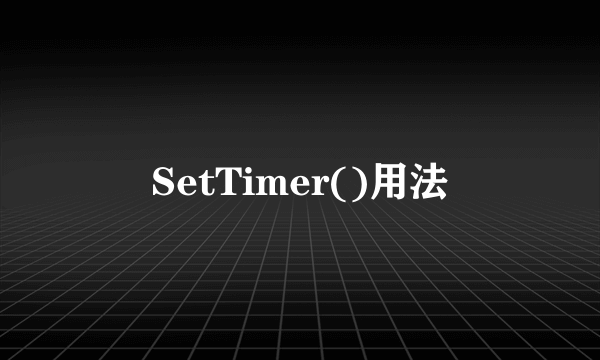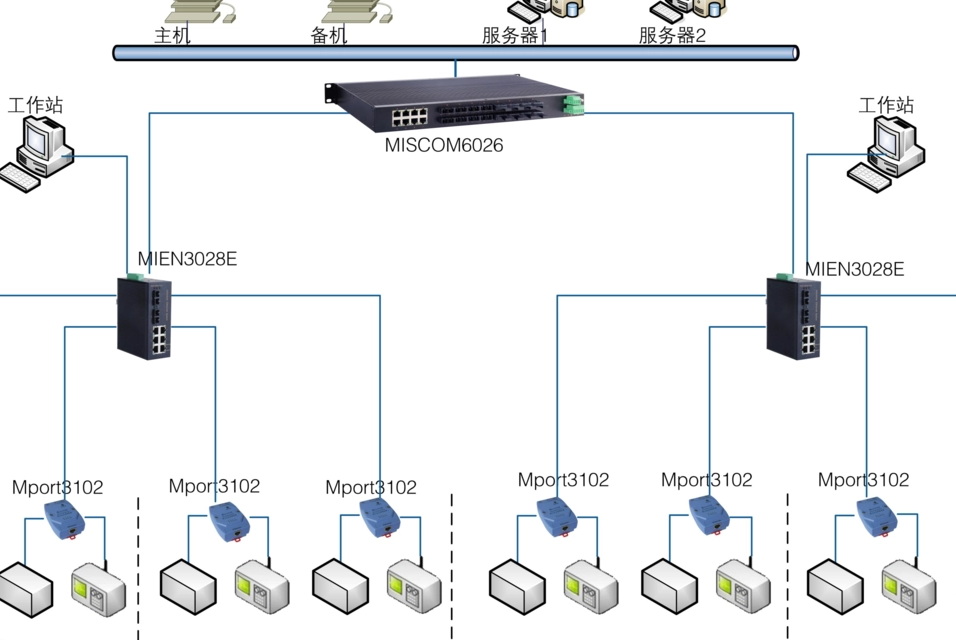SetTimer()用法
的有关信息介绍如下:
不知道你的SetTimer是MFC的还是API的,所以都给你列出来MFC中的SetTimerCWnd::SetTimerUINT SetTimer( UINT nIDEvent, UINT nElapse, void (CALLBACK EXPORT* lpfnTimer)(HWND, UINT, UINT, DWORD) );Return ValueThe timer identifier of the new timer if the function is successful. An application passes this value to the KillTimer member function to kill the timer. Nonzero if successful; otherwise 0.ParametersnIDEventSpecifies a nonzero timer identifier.nElapseSpecifies the time-out value, in milliseconds.lpfnTimerSpecifies the address of the application-supplied TimerProc callback function that processes the WM_TIMER messages. If this parameter is NULL, the WM_TIMER messages are placed in the application’s message queue and handled by the CWnd object.RemarksInstalls a system timer. A time-out value is specified, and every time a time-out occurs, the system posts aWM_TIMER message to the installing application’s message queue or passes the message to an application-defined TimerProc callback function. The lpfnTimer callback function need not be named TimerProc, but it must be defined as follows:void CALLBACK EXPORT TimerProc( HWND hWnd, // handle of CWnd that called SetTimer UINT nMsg, // WM_TIMER UINT nIDEvent // timer identification DWORD dwTime // system time);Timers are a limited global resource; therefore it is important that an application check the value returned by the SetTimer member function to verify that a timer is actually available.Example// This example shows how to use CWnd::SetTimer, CWnd::KillTimer, and how to handle WM_TIMER messages. A timer is set up to send a WM_TIMER message to the main frame window every 2 seconds in OnStartTimer(). OnStopTimer will stop the timer by calling CWnd::KillTimer. OnTimer was set up through class wizard to handle WM_TIMER messages for the main frame window. In this example the PC speaker will beep every 2 seconds.void CMainFrame::OnStartTimer() { m_nTimer = SetTimer(1, 2000, 0);}void CMainFrame::OnStopTimer() { KillTimer(m_nTimer); }void CMainFrame::OnTimer(UINT nIDEvent) { MessageBeep(0xFFFFFFFF); // Beep // Call base class handler. CMDIFrameWnd::OnTimer(nIDEvent);}Windows API中的SetTimerSetTimerThe SetTimer function creates a timer with the specified time-out value. UINT_PTR SetTimer( HWND hWnd, // handle to window UINT_PTR nIDEvent, // timer identifier UINT uElapse, // time-out value TIMERPROC lpTimerFunc // timer procedure);ParametershWnd [in] Handle to the window to be associated with the timer. This window must be owned by the calling thread. If this parameter is NULL, no window is associated with the timer and the nIDEvent parameter is ignored. nIDEvent [in] Specifies a nonzero timer identifier. If the hWnd parameter is NULL, this parameter is ignored. If the hWnd parameter is not NULL and the window specified by hWnd already has a timer with the value nIDEvent, then the existing timer is replaced by the new timer. When SetTimer replaces a timer, the timer is reset. Therefore, a message will be sent after the current time-out value elapses, but the previously set time-out value is ignored. uElapse [in] Specifies the time-out value, in milliseconds. lpTimerFunc [in] Pointer to the function to be notified when the time-out value elapses. For more information about the function, see TimerProc. If lpTimerFunc is NULL, the system posts a WM_TIMER message to the application queue. The hwnd member of the message's MSG structure contains the value of the hWnd parameter. Return ValuesIf the function succeeds and the hWnd parameter is NULL, the return value is an integer identifying the new timer. An application can pass this value to the KillTimer function to destroy the timer. If the function succeeds and the hWnd parameter is not NULL, then the return value is a nonzero integer. An application can pass the value of the nIDTimer parameter to the KillTimer function to destroy the timer.If the function fails to create a timer, the return value is zero. To get extended error information, call GetLastError.RemarksAn application can process WM_TIMER messages by including a WM_TIMER case statement in the window procedure or by specifying a TimerProc callback function when creating the timer. When you specify a TimerProc callback function, the default window procedure calls the callback function when it processes WM_TIMER. Therefore, you need to dispatch messages in the calling thread, even when you use TimerProc instead of processing WM_TIMER. The wParam parameter of the WM_TIMER message contains the value of the nIDEvent parameter. The timer identifier, nIDEvent, is specific to the associated window. Another window can have its own timer which has the same identifier as a timer owned by another window. The timers are distinct.





















